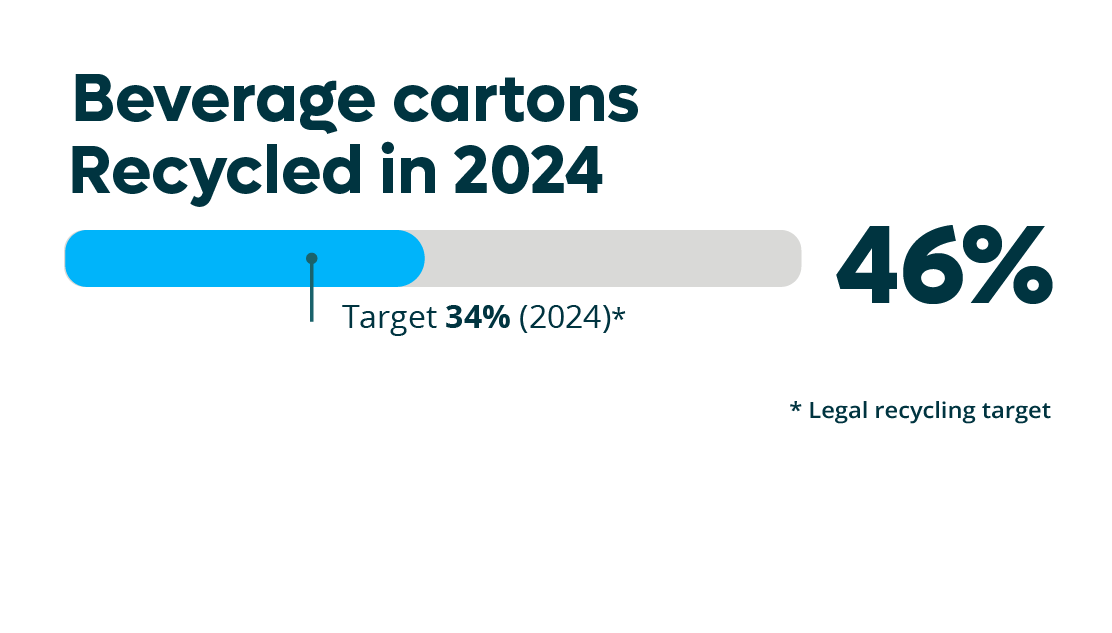Our circularity results

By recycling or reusing as many packaging materials as possible, we contribute to a cleaner and more sustainable world. On our way towards fossil-free and circular packaging.
Our results
On behalf of producers and importers of packaging, we are responsible for delivering the recycling targets as efficiently and effectively as possible. We present the recycling results from the previous year in our yearly Public Report: Wherever you look, you'll find us everywhere! We also publish the monitoring report, which is the technical report addressed to the government with all detailed information.
Recycling and circularity targets
Every year, specific recycling targets are set for each category of material. In 2021, the Dutch government has also introduced so-called circular targets in which the reuse of packaging may be added to the recycling results. The Netherlands is one of the few countries in Europe with circular targets. With this, we are taking an important step forward in the Netherlands towards a circular economy for packaging.
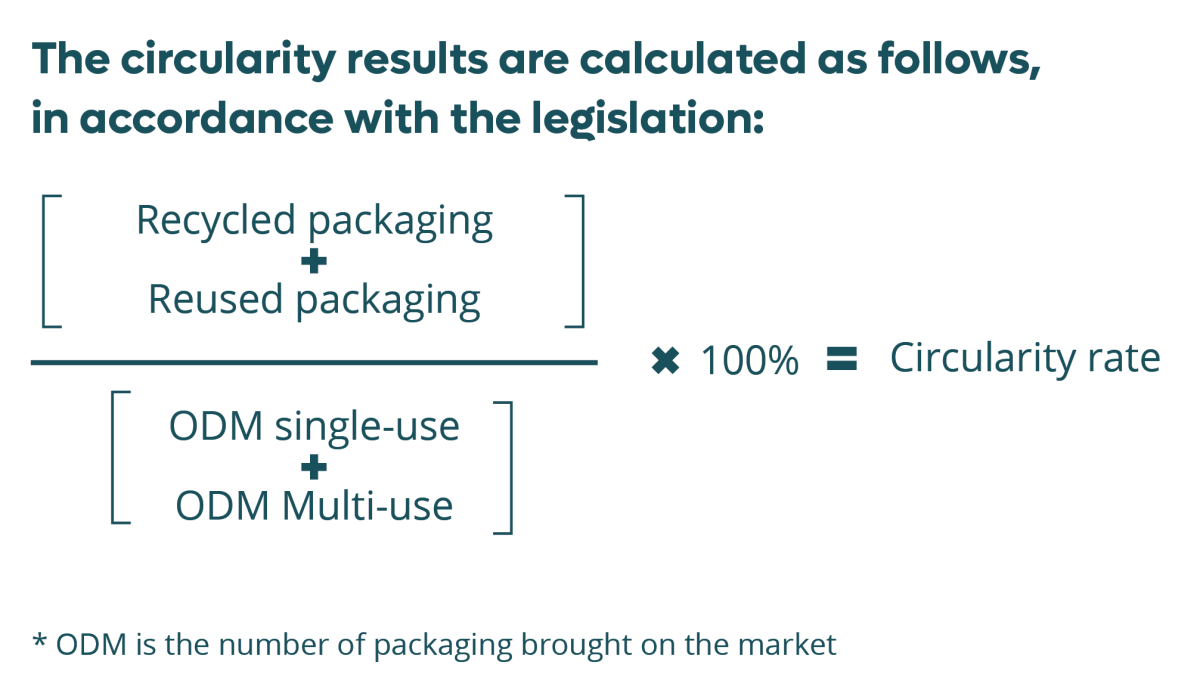
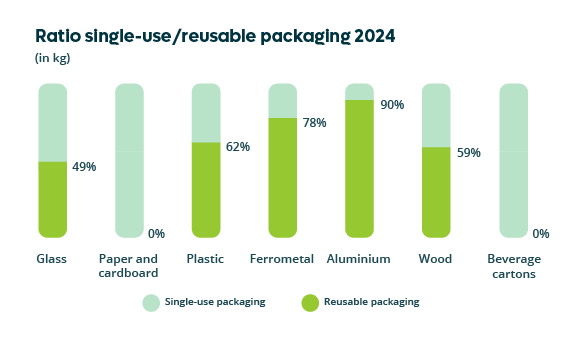
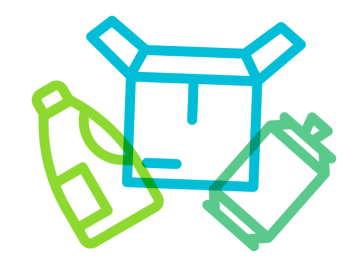
Circularity results 2024
In 2024, 88% of all packaging released on the market was recycled or reused. This is well above the Dutch legal target of 72% and the European target of 65% (in 2025). This makes us ons of the front runners in Europe, thanks to clear agreements and because of the way the packaging recycling chain is increasingly well organised with all parties. The packaging industry takes responsibility, which we as Verpact take on collectively. We still have a long way to go towards completely fossil-free and circular packaging in 2050. We are working on this together with all parties in the chain.
* In 2022, the Dutch government has introduced so-called circular targets in which the reuse of packaging may be added to the recycling results.
Explanation of results
Resource efficiency starts with using as little as possible and then reusing as much as possible. Verpact wants to recycle as much packaging as possible. Not just to meet the legal standards, but also because we are working towards circular chains. As the main driving force behind this transition, Verpact brings parties together, makes agreements and stimulates innovation. And that work is bearing fruit: in 2024, most recycling and circular results show an increase compared to 2023. We comfortably met the legal recycling and circularity targets for glass, paper and cardboard, plastic, ferrometal, aluminum, and wood. We also achieved the legal recycling target for beverage cartons. We're making good progress with deposit refunds, and the growth in collection is faster than it was in the Scandinavian countries and Germany.
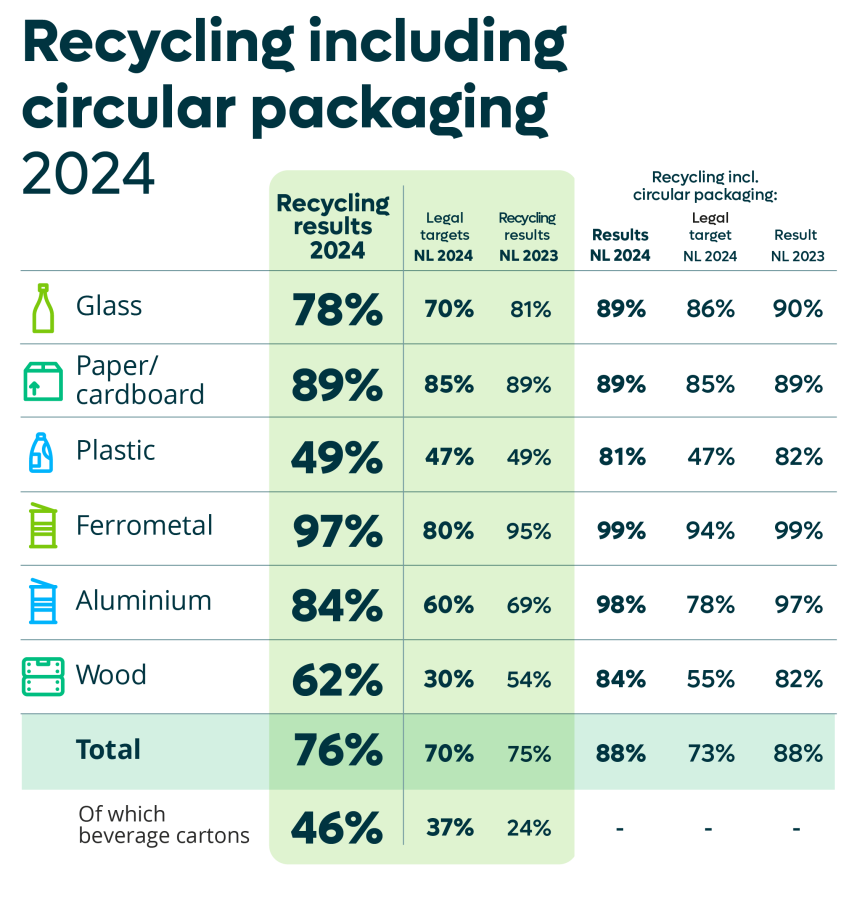
Collection results of large and small plastic beverage bottles 2024
The collection rate for plastic beverage bottles increased from 74% in 2023 to 77% in 2024. Compared to other European countries with a similar deposit system, the Netherlands is showing a rapid increase that inspires confidence.
In order to achieve the legal 90% standard for plastic beverage bottles, Verpact and Statiegeld Netherlands, part of Verpact, are working hard to set up additional collection points, to get more juice producers to participate in the deposit system, and to convince consumers of the urgency of handing in their deposit packaging.
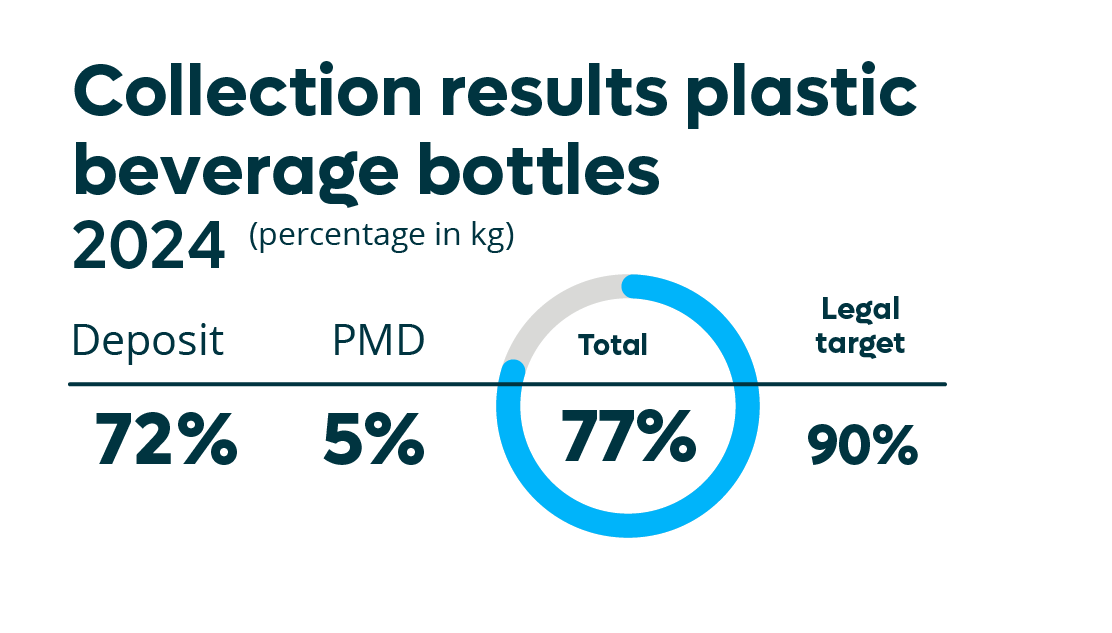
Collection results metal beverage containers 2024
The collection target for metal beverage containers is 90% in 2024. All metal beverage containers fall within the deposit system. Unlike plastic beverage bottles, this does not include other metal beverage packaging. In 2024, the collection target will be 83% of the weight of all metal beverage containers placed on the Dutch market. This shows we are faster than the Scandinavian countries and Germany, which took 8 to 10 years to reach 90%.
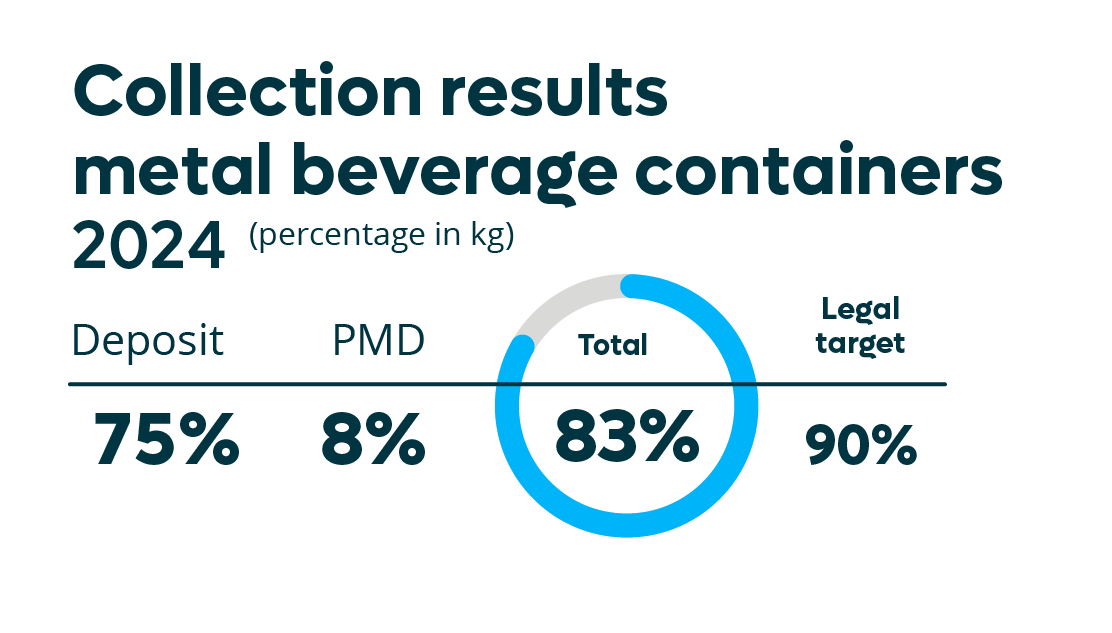
Beverage cartons
As of July 1, 2023, the Netherlands are the only country in Europe to have a statutory recycling target for beverage cartons. The target was 37% for 2024 and will gradually increase year-over-year, up to 55% in 2030. In 2024, Verpact launched a comprehensive program to recycle more beverage cartons. While many beverage cartons had to be incinerated in 2023 due to insufficient recycling capacity and a fire at a large post-separator, that share remained relatively limited in 2024. In 2024, we achieved a recycling rate of 46%, almost double the 24% achieved in 2023. Because this remains a vulnerable supply chain, we will continue to invest.
